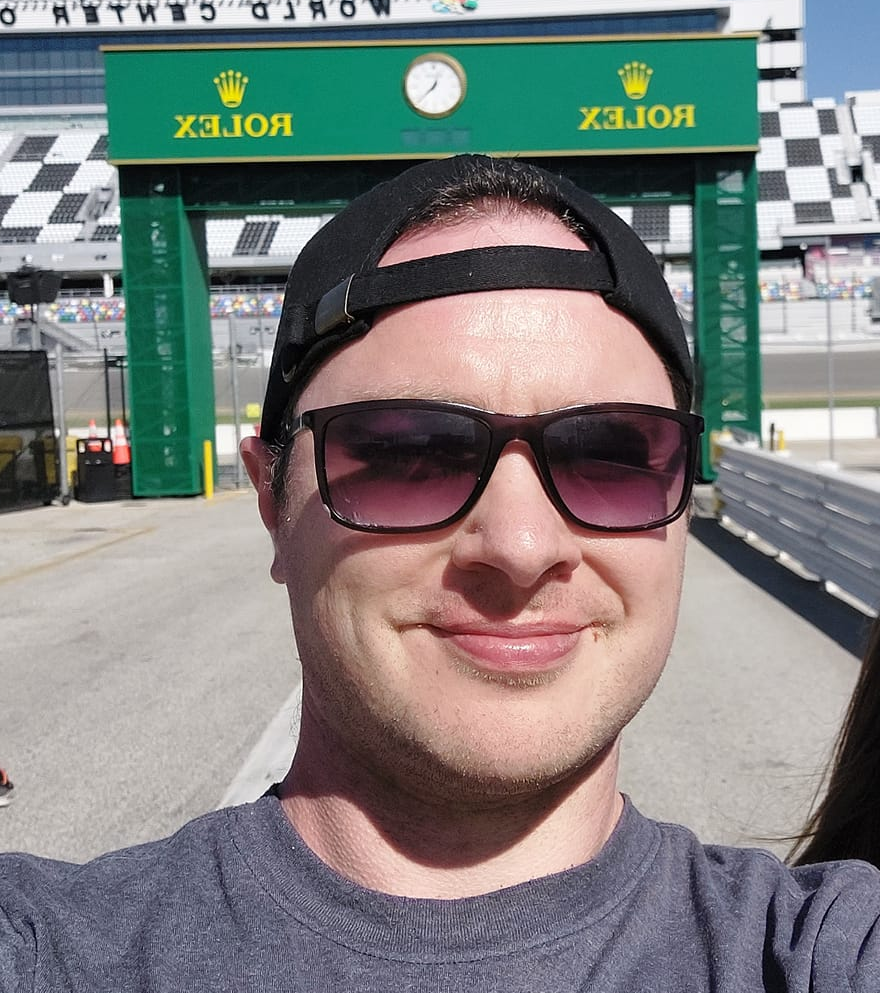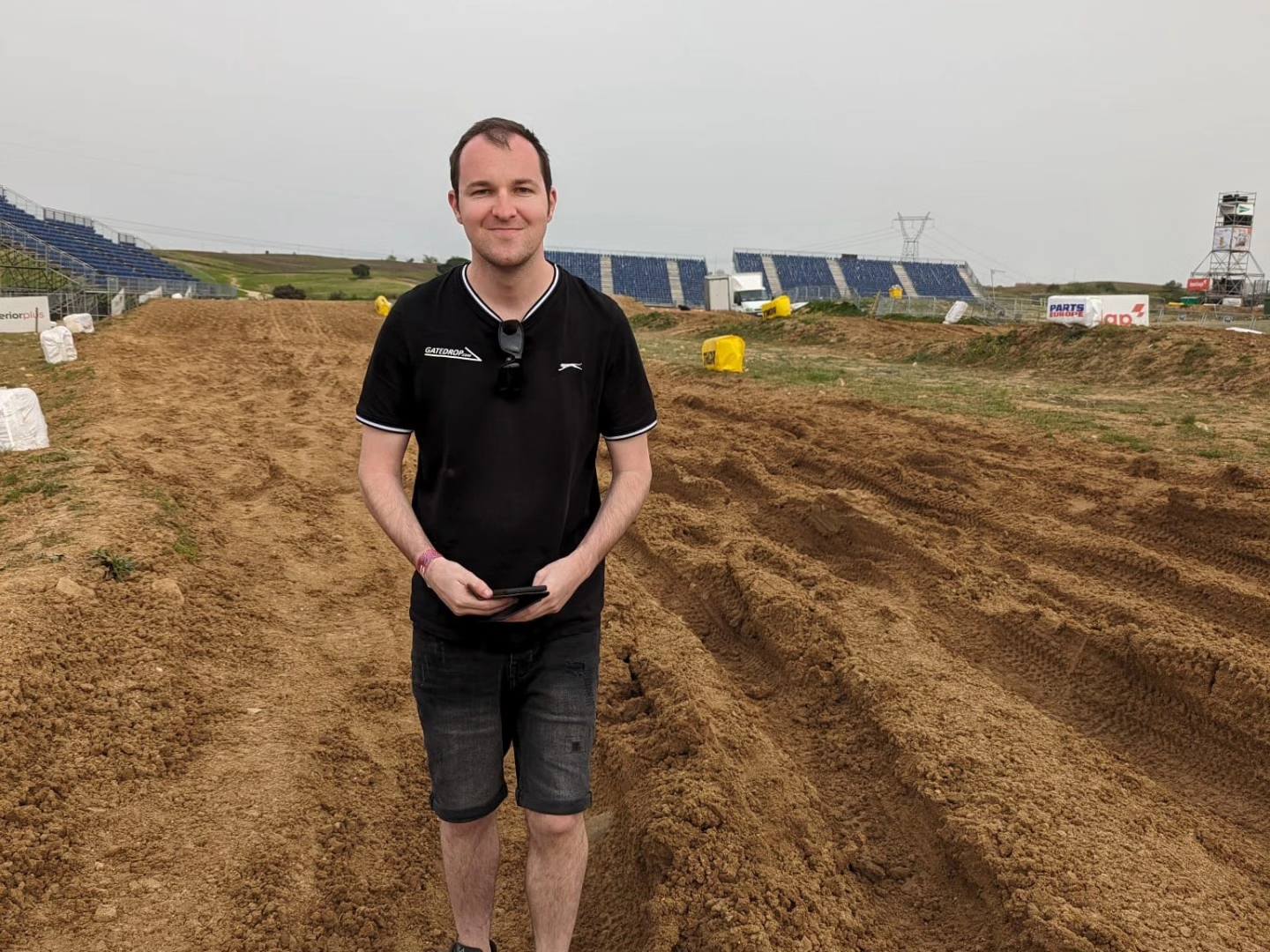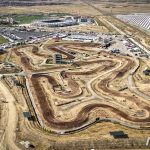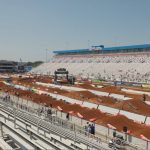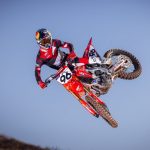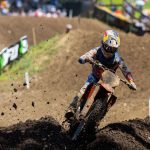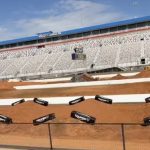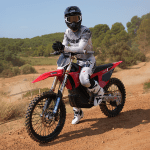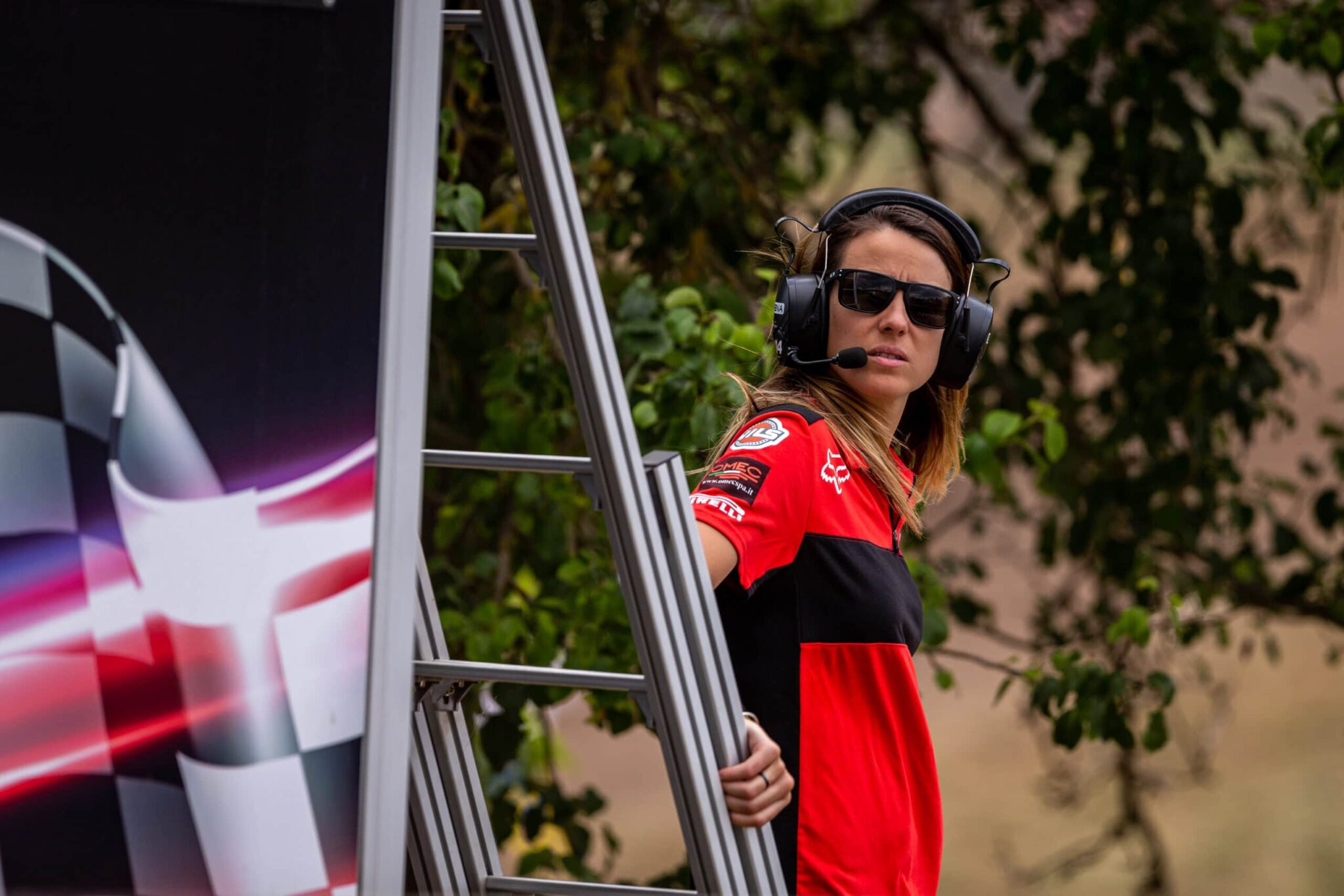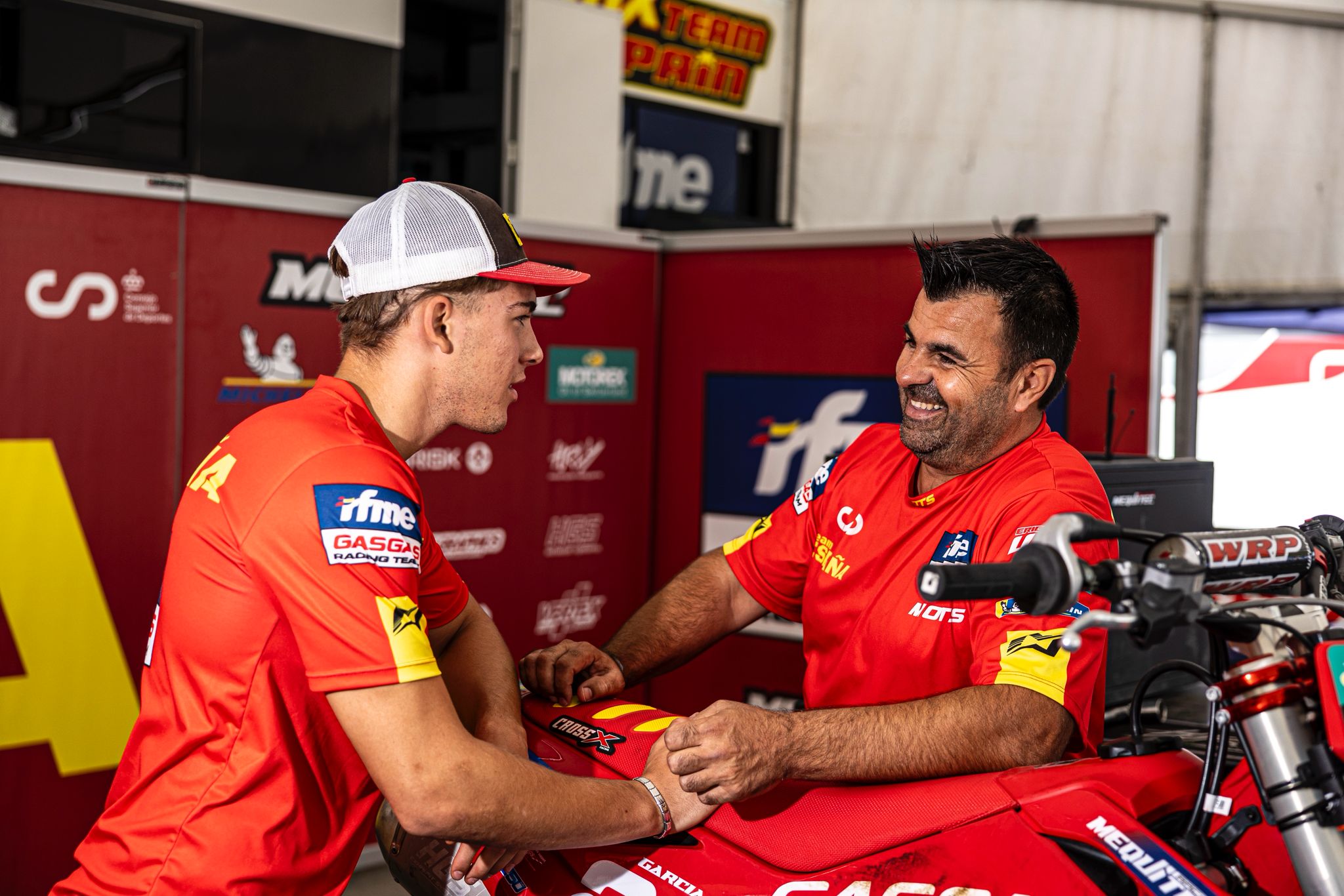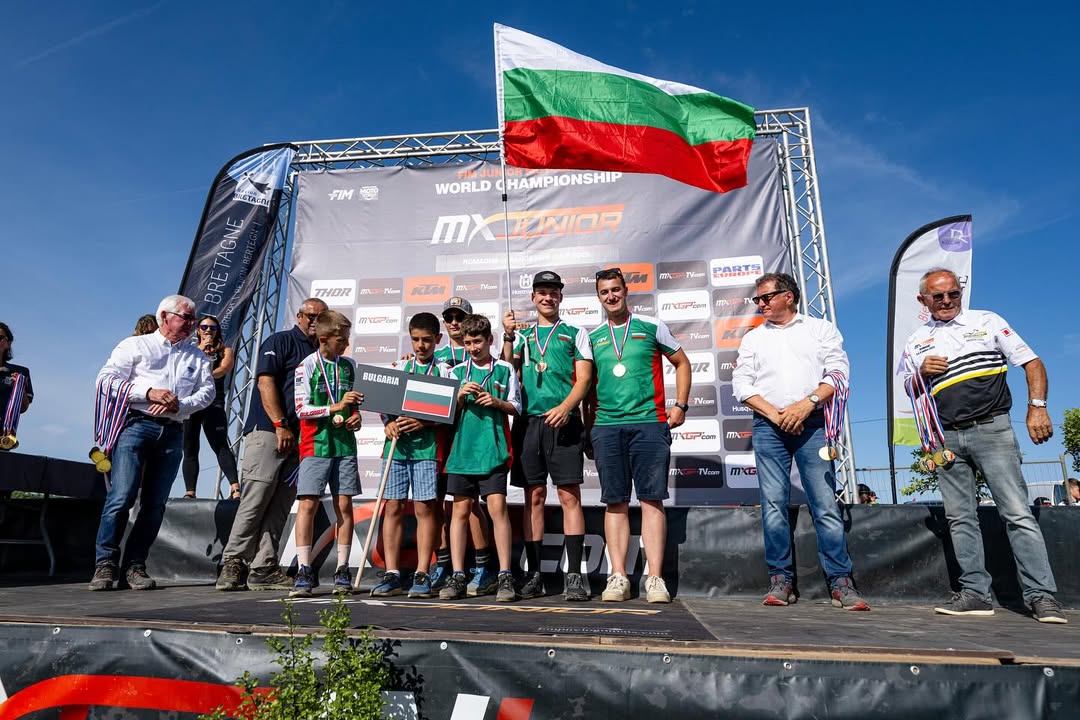After years competing in the MXGP paddock, Valentin Guillod has taken on a new challenge across the Atlantic, joining the AMA Pro Motocross Championship with the Rock River Yamaha team. The Swiss rider, known for his technical style and honesty, is embracing the American scene with humility, determination, and a refreshing sense of perspective.
In this candid interview with Kevin Frelaud, Guillod reflects on the differences between racing in Europe and the U.S., the financial realities for privateers, and his hopes for the rest of the season—including the SMX playoffs. From arriving in California with a stock bike and little fanfare to immediately cracking the top ten, Guillod’s story is one of resilience, adaptability, and a pure love for the sport.
Valentin, since your crash in Frauenfeld and the broken collarbone, you’ve stayed pretty quiet about your plans. You told me you were hesitating between returning at Ernée or heading to the U.S. In the end, what made you decide to suddenly head over for the Outdoors?
Guillod: Since I was a kid, I always said that one day, I’d go to the United States to do the Outdoors at least once. I’m also getting older, and I really told myself I had to go soon because I didn’t want to have any regrets at the end of my career—even if it was just for one race. I just wanted to experience it. That idea was always in the back of my mind.
Since November—when I started training again—I told myself I’d do the GPs up to the Swiss GP, and then see if any factory riders were injured and needed replacing. If not, why not do the Outdoors? We got to Frauenfeld, and it was me who got injured. The way things turned out made going to the U.S. the better option. If I hadn’t gotten injured, I probably would’ve continued in the World Championship and wouldn’t have gone to the U.S. That injury really made me stop and think: “What do I do now?” I wasn’t fighting for anything in the championship anymore—I’d missed two GPs—so the scale tipped in favor of the U.S.
There was also a no from a factory team, who told me they wouldn’t be replacing their injured rider until he came back in August. I was really disappointed because, with my small budget, I’d shown that I could finish between 5th and 10th every weekend on a stock bike. I wasn’t asking for a full factory package or a works bike, just a bike that could run top 10 in GPs. I have to admit I was disappointed by their refusal, considering the investment and millions they put into that team. Meanwhile, the injured rider’s bike is just sitting in the garage, the mechanics are in the workshop—what a shame. I get that teams don’t want to replace their riders if the bike’s just going to run in 20th or 25th place, but with me, I think it’s fair to say the bike would be running around 10th every weekend.
I’m not a team manager or an agent, but I imagine teams have sponsors paying for two bikes to be on track—and right now, only one is. Isn’t there some kind of penalty for that?
After all, the whole setup is already at the GPs, so it’s not even an extra budget cost. The mechanics aren’t responsible if a rider gets injured, and I assume they get paid whether a rider is racing or not. So they’re probably in the workshop or helping out at the races. With 110 kg of freight, I finished 5th in a moto in Argentina, while the big teams are sending 1,000 kg per rider… Anyway. I was disappointed, and I didn’t want to have regrets. I got that no from the team on a Thursday, and right after that, I bought my ticket to head to the U.S. There was only one week left before Fox Raceway, I couldn’t hang around.
People keep saying you didn’t get a ride—but you actually had offers?
Guillod: I had a lot of offers to do national championships—in Germany, Italy, Switzerland, Australia, even Brazil—but for now, I’ve said no. I’m really focused on the two biggest championships: MXGP and the Outdoors.
Nationals are something I can do when I’m older. Guys like Aranda, Van Horebeek, and Nagl have shown you can perform in those national championships even when you’re a bit older.
That’s why I’m putting those aside for now and going all in on the big leagues. I had one or two offers for the GPs, but they were from teams I wasn’t really interested in. So I preferred to stay completely free and do things my own way.
So you get that negative reply from the team, buy your plane ticket—then what? Did you have any contacts in the U.S.? You didn’t just land there in the middle of the night and start looking for a motel, right? [laughs]
Guillod: I had a look at some hotels before leaving, then a friend told me Scotty Verhaeghe was over there, had a house, and that I should talk to him. I didn’t have his number, so I messaged him on Instagram. He replied and said we could work something out. By Friday night—24 hours before I got on the plane—I had found accommodation. Big thanks to Scotty for that.
It took a big weight off my shoulders—he has a big house, and more importantly, a garage with everything needed to work on a practice bike. Scotty has a vehicle, we go training together. I didn’t even need to rent a pickup truck or anything.
I also asked him, “Do you have a spare bike?” because obviously, I didn’t have one. He offered to rent me his second bike, and that was it—we were off. Before I even landed, everything was sorted. I had a place to stay, a bike to ride, my flight, a rental car—it was all ready.
Things really fell into place for you, because not everyone can decide to race the Outdoors a week before and get everything set up in just a few hours.
Guillod: Yeah, it worked out great. It’s already tough leaving home, family, and friends to end up alone on the other side of the world in a hotel room… Here, we speak French, there’s life around, we’re together—honestly, it’s awesome.
Also, a friend from Kehrli Moto—who helped me out for the GPs—had already worked with Rock River Yamaha in the past. He sent them an email explaining my situation. When I landed in LA, I opened my inbox and saw a reply from the Rock River guy. He said he was OK to lend me two bikes—one for racing, one for training—and they’d set me up next to their awning, under a small tent, and that was that.
So what’s the deal with Rock River? A lot of people think you signed with them, but that’s not really the case.
Guillod: The deal is: they’re lending me two bikes, setting up a little tent next to their structure, and lending me a mechanic for a few races because they currently have an injured rider [Grant Harlan]. When he comes back, I won’t have a mechanic anymore [laughs]. They’ll still bring the bike to the races and set up a little tent for me—I’ll just need to find my own mechanic.
Basically, they’re placing me next to their official structure because I have my own sponsors. It all came together last minute, so we didn’t even have time to finalize everything before the first round. I was able to pick up the training bike on Monday, but nothing was finalized until Wednesday. We didn’t get around to doing the graphics, etc. I have material and logistical support, nothing more—but it takes a huge load off my shoulders.
In the end, maybe you’re better off spending three days in the U.S. as a tourist than you were in the World Championship.
Guillod: And that’s not even the whole story [laughs]. With this deal, I just have to pay for my parts. They cover the bike transport for the races, and the race fuel too. I don’t get a salary, but I keep all the AMA prize money, Yamaha and Dunlop contingencies, and money from small sponsors. I just have to pay my mechanic on race Saturdays. You could say I’m a privateer, but the team provides a structure for me.
So it’s confirmed—you’re doing the whole outdoor season?
Guillod: Actually, I initially booked a return flight to do just the first four rounds. I told myself I’d rent Scotty’s bike, see how much it would cost, how much I could earn—do the math. Then I got the deal with Rock River Yamaha, and I thought, “Alright, let’s do the whole season!” I’ll just head home after High Point for five or six days, because it’s always good to go home. See my family, enjoy some downtime—it’ll do me more good than staying over there the whole time.
If someone had told you things would work out like this before the GP team got back to you, maybe you wouldn’t have even waited for their answer before heading to the U.S.?
Guillod: I still would’ve waited because it’s a great team. But I had already asked myself, “If they come back with something positive, what do I do?” Imagine if they’d asked me to come test—what would I have done? I would’ve had a really hard time making a decision because it wouldn’t have been easy. Do you sign with a top team or take your shot and live an incredible experience in the U.S.? Either way, there were no regrets, but let’s say they made my decision easier. I left with two bags and my bike, found a cool deal quickly, so it’s all good.
You were supposed to wear your buddy’s gear, 175 Racing, but your cousin told you about contingency programs with gear brands, right?
Guillod: Yeah. My friend couldn’t give me any money; he was doing it just for fun. So I got in touch with O’Neal and they said, “No problem, Valentin. We can give you this much per race, and bonuses for results too.” I was blown away.
We’ll come back to the financial side later. Let’s talk about the first round. You went 10-13 after crashing in the second moto. You caught up to Jason Anderson in the first moto—he even thought you were a lapped rider [laughs]. Considering you arrived with a freshly repaired collarbone, barely any bike time, and it’s a whole new series and format… 11th overall isn’t headline-grabbing, but it’s a very solid debut, right?
Guillod: Yeah, it had only been four weeks since I had surgery on the collarbone. I actually rode in Switzerland 16 days after surgery. But really, I just did 3 or 4 laps and posted a video on Instagram to show I was back on the bike—not exactly training.
So it was just to say “Hey teams, I’m available”?
Guillod: Exactly. A factory team had an injured rider, and I wanted to show I was back. The good thing is I got to test the collarbone and it went well, so I thought, “Alright, I can start training again.” A week later, I did 3 sets of 20-minute motos, just cruising. That was basically my first real training. Then I flew to the U.S., rode Tuesday and Wednesday just to get some feeling, did the press day at Fox Raceway on Friday where I got 5 laps in. The race was Saturday. I came in with 3 hours of bike time in the last month. I told myself if I got two top 15 finishes, I’d be really happy considering the circumstances. I didn’t want to go and get hurt in the first race.
How did the motos go?
Guillod: I started 19th in moto one and worked up to 10th. There was a Kawasaki rider ahead of me—I thought it was Prado. We’re across the world, but there’s still a little European race going on with Guillod, Paturel, and Prado [laughs]. I saw Benoît ahead and told myself I had to pass him. Then I spotted the Kawasaki and thought it was Prado, and figured I’d go for top European. So I twisted the throttle. Turns out, it was Jason Anderson. He kept looking back on every jump to see who the hell this three-digit guy behind him was [laughs]. In moto two, I started around 18th again and climbed to 12th, but I was starting to feel it physically. I didn’t stand up at the right moment in a section, did a quick left-right swap and crashed. Got going again in 16th and finished 13th. I was pretty much on empty by the end.
Tell us about the track. Those outside lines at Fox Raceway you hit wide open must be a change from Frauenfeld or Cozar.
Guillod: Yeah, for sure. I’m still struggling with that because in Europe, there’s usually only one fast line. The level is tight too, but since the tracks are smaller, gaps are smaller. So you follow the guy in front and wait for a mistake or a tiny opening to make a move. Outdoors here is different. I find myself getting stuck behind guys. But you can actually go way outside in a corner and still come out next to—or even ahead of—someone who’s tight on the inside. I really need to get used to not being afraid of completely changing my lines. In GPs, if you change lines, you shift by 50 cm. Here, it’s 20 meters. That’s not something I’m used to…
And with the one-day format, there’s less track time than in GPs. Plus, these guys know Fox Raceway like the back of their hand, which obviously helps them.
Guillod: Yeah, and they’d been riding there for two weeks before the race doing testing. I was really impressed. In the first lap of practice, you’re not allowed to jump anything, so your first lap takes like 3 minutes. That leaves you maybe 12 minutes to set a time. And by the end of that first lap, these guys are already pinned. It’s impressive. Luckily, I got 5 laps in during the press day on Friday just to learn the jumps. But the thing is, the track was dry and hard on Friday. Saturday morning, they’d soaked it—almost muddy. If you go off-line or land a bit long, you could easily crash. After just two laps, guys were already coming back with bent bars. I took it easy.
In GPs, some riders go all-in from the first laps of practice, but others ease into it. You’re more the second type, right?
Guillod: Yeah, I prefer to build into it over the first five laps. But here, it’s flat-out from the get-go.
Practice is in the morning, and the first race is at 2 PM. Then everything moves super fast between motos—there’s not much time.
So, that Friday press day—you planning to do it every time now to get a few extra laps in?
Guillod: Yeah, I’m going to try to do every one. If I can get 5 laps on the track the day before, it’s worth it. It helps me figure out the jumps at least. The outdoor tracks are 2:30 per lap, and you only get 12 minutes to set a time since you can’t jump on the first lap. You end up doing just 5 laps in qualifying, so 5 extra laps on Friday really help.
Let’s talk about Jett Lawrence. He makes it look so effortless. He’s not even pushing, and yet he smokes everyone. You start to wonder what he’s doing that others aren’t. Not to demoralize you, but when he puts 5 seconds on you… do you wonder how?
Guillod: That guy just reads the track better than anyone. That’s the first thing. The second thing is, he’s not afraid to slow down to go faster. And that’s totally counterintuitive. In a race, it doesn’t feel right to go slower so you can go faster. It freaks most riders out. My issue is I go into corners too fast. I brake super late. For me, it’s a race—I think I need to be flat out from start to finish. I’m scared to ease up going into corners just to try and come out faster. Jett doesn’t think that way. He’ll go slower than you in one section to go way faster just after. I think that’s one of his big advantages. He reads the track incredibly well, and he’s not afraid to go slow in order to go fast.
In GPs, you get more tight corners, tight insides, more “stop & go” riding, compared to the outdoors where you see guys maintaining a lot more momentum.
Guillod: Yeah. And that brings us back to what I was saying earlier. The tracks are so much bigger here that there’s a bigger margin for error when it comes to lap times. It’s just as competitive as GPs, but in GPs, the lap times are all within half a second. Here, they’re within two seconds because the tracks are huge. If you make a mistake in the outdoors, you won’t immediately get passed. A guy might catch up to your rear wheel, but he might also make a mistake before the end of the lap. That’s where it’s different—the length of the tracks. If you’re a second slower on a one-minute track, you’re two seconds slower on a two-minute one. So the gaps look bigger outdoors, but the level is the same. You still have that solid front group of 3 or 4 guys. And the top 15 are flying.
Let’s talk money. 11th overall in the outdoor opener—how much did you make, Valentin?
Guillod: Honestly, I don’t even know. I haven’t done the math yet. AMA pays you every two weeks, so I’ll get paid for both Fox Raceway and Hangtown together. I’ve also got the Yamaha contingency, O’Neal, I think Dunlop too—I have to check with the team. I think for Fox Raceway, I probably made around $2,000. It’s funny because on Monday morning, Jeffrey Herlings messaged me. He asked, “So, how much did you make?” and I replied, “More than you.” He was gutted—he’d finished fourth at the GP and made zero euros. It actually cost him €500 to go race. Granted, we’re not counting his annual salary [laughs].
At Honda SR, you were paid by the point directly by the team. You also had a salary, of course. But I’m guessing if you finished 11th at a GP, you weren’t walking away with €2,000, right?
Guillod: How many points do you get for 11th? 11th in a moto is 10 points. So two 11th-place finishes = 20 points. That’s €600. Then I had my yearly salary, so it was just a bonus.
The contingency system that rewards non-factory riders for representing the brands really makes sense. You’re promoting a brand at a high level without being officially supported—it’s only fair to be compensated. Otherwise, you could just strip the Yamaha logos off your bike, throw on green plastics, and call it a day. Like what F&H did in their final year.
Guillod: Exactly, and that’s exactly what I didn’t want to do. That’s why I kept my Yamaha blue, with all the Yamaha YZ-F logos on it. I even wore a Yamaha T-shirt at the races because I didn’t want anyone to say I was doing it wrong. And I thought it might help open some doors. Maybe I’d get an email or a phone call saying, “Well done, Valentin.” Maybe they’d throw me two clutches to help out. But that didn’t happen.
You’re doing all 11 rounds of the outdoor series, so chances are you’ll qualify for the SMX finals at the end of the season…
Guillod: Yeah, that’s the goal. I don’t totally understand how it works, but now that I’m here, the plan is to qualify for the playoffs. And then there’s the Motocross of Nations in the U.S. too.
We were just talking about money—there’s potentially a lot to be made there. Though I imagine that’s not your main motivation, considering you turned down good offers for national championships.
Guillod: Exactly. I came to the U.S. for the experience. I don’t really care about the money, even if life’s easier when you can pay your bills. I just don’t want any regrets. I’m doing the outdoors and everything else is just a bonus. I’m a competitor—I want to do the best I can every race. But the real reason I came was to live the U.S. motocross experience. I went 10–13 and I’m happy. It’s an amazing experience, and that’s what matters most to me. If I can get good results and make some money, that’s great.
If you have a strong outdoor season and do well in SMX, maybe some new doors will open and you’ll end up staying there? Is that on the radar?
Guillod: People have asked me if the GP door is closed. It’s not. I could go back to GPs. But the U.S. door isn’t closed either. If I get an offer to do Supercross and Motocross, why not take it?
I haven’t done a lot of Supercross, but I did win in Geneva on a 250, finished 4th in Geneva on a 450, and 4th in Paris-Lille—even if U.S. SX is on a whole other level compared to Europe. Still, I’ve always enjoyed it.
Maybe it’s too early to say, but in hindsight, you probably have a better chance of getting noticed by riding into the top 10 in the U.S. than in GPs. You showed what you could do there and it didn’t pay off this year. In the U.S., people don’t know who you are, so they’ll notice you quickly. But then you’d need to do Supercross…
Guillod: Exactly—that’s why I want to do some test days. I’m not closing any doors. Maybe I’ll get an offer to return to GPs in August and I’ll go back. It could go either way right now. The goal is just to keep racing for another 2 or 3 years, whether that’s in GPs or in the U.S.
Your Rock River Yamaha teammate is Grant Harlan. He went 12th at Fox Raceway. You got 11th… When they see you show up in shorts and flip-flops with a freshly plated collarbone, a stock bike, and a triple-digit number—only to go and ride inside the top 10—they must be wondering where the hell you came from?
Guillod: They were shocked [laughs]. But they were really happy too. The difference with Europe is that everyone here was genuinely happy for me—even other riders who didn’t know me. Within the team, there was just one young 250 guy, maybe 21 or 22, who knew me. He’s a big fan of the GPs, watches them all, gets up early to stream them, so he knew who I was. The rest? Nobody had a clue, so it was pretty funny.
So when you showed up for press day at Pala on Friday…?
Guillod: Yeah, I rolled in with a completely stock bike. People were wondering who this joker was showing up at a national with that setup. I had to install the Akrapovic exhaust for the race because the stock one didn’t pass sound check. No one in the team knew me—they were wondering what I was doing there [laughs].
Final thoughts?
Guillod: There’s always this debate about who’s better in motocross. The truth is, it’s just as fast in GPs as it is in the U.S. It’s just different. Even just comparing the paddocks—GP vs. AMA—it’s like four light-years apart. And let’s not forget, the U.S. series is a national championship. It feels more like doing a Dutch Masters or a French Elite in terms of atmosphere. They’re two different worlds, and we need to stop trying to compare them. In Europe, we work with what we’ve got. Of course, we can improve—like I’ve said for a few years now, especially by creating a category for privateers like they do in MotoGP. In the U.S., the economy is bigger, there’s more money, so it evolves differently. But they should improve some stuff too—like the paddocks, for example—just as we could improve certain things in GPs. Bottom line: it’s two different worlds, on different tracks, but they’re both going full gas.

